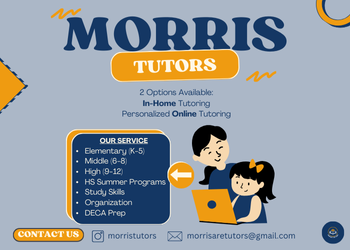Many people don’t stick to just one career anymore. And if you’re someone who’s thinking about grad school but your undergraduate degree doesn’t quite line up with what you want to study next, you’re not alone.
A lot of programs now understand that people change their goals. Many have started opening their doors to students with different academic backgrounds—especially those who bring work experience, clear goals, and motivation.
This article will help you figure out how to find the right master’s program, even if your bachelor’s degree doesn’t seem like the perfect fit.
1. Get Clear on What You Want Next
Before jumping into any applications, take a moment to think about what you really want. Are you trying to move into a completely different field? Or are you trying to grow in your current job and need extra training to do it?
Knowing your goals will make everything else easier. If you want to shift into social work, for example, that’s going to guide your search differently than if you want to stay in marketing but add data analytics to your skillset. Your choice of program should match the kind of work you want to do after graduation—not just what sounds interesting right now.
2. Explore Programs Designed for Career Changers
Some master’s programs are built specifically for people changing careers. These programs tend to be more open to applicants who don’t have a traditional background in the field. They may include introductory courses or extra academic support during the first term to help you adjust.
For instance, if you look up 1 year MSW programs online no BSW, you’ll find that some schools offer options designed for students without a Bachelor of Social Work. These programs let people from unrelated fields start a graduate-level education in social work without needing to earn another undergraduate degree first. When reading through program descriptions, look for words like “bridge,” “accelerated,” or “transitional.” These are signs that the program is designed with flexibility and accessibility in mind.
3. Look for Skills-Based Admissions
Some graduate programs are starting to move away from checking boxes. Instead of looking for a specific bachelor’s degree, they want to know what skills you bring to the table. That could mean work experience, certifications, or completed training.
Programs that take a skills-first approach are often more open to nontraditional students. They want to know if you can succeed in the program, not just whether you studied the “right” thing ten years ago.
If you’ve taken any courses outside of your degree—online or otherwise—be sure to highlight them. They can help show that you’re prepared, even if your transcript doesn’t tell the full story.
4. Consider Schools That Offer Prerequisite Flexibility
Some schools require that you complete a few specific courses before you apply. Others will let you enroll and take those classes during your first term. This flexibility can make a big difference, especially if you’re switching to a field like healthcare, tech, or counseling.
Look closely at each program’s website. If it says “prerequisites required,” that doesn’t always mean you’re out of the running. Some schools will let you take them while you’re already in the program. Others might let you substitute related experience.
When in doubt, reach out and ask. Many admissions teams are happy to talk through your situation and let you know what your options are.
5. Pay Close Attention to the Curriculum
Once you’ve found a few programs that interest you, go deeper and review the course list. This will help you see how the program is structured and what’s expected from students. Look for courses that may be hard to follow without a strong background in the subject. If most classes assume prior experience you don’t have, that might not be the right fit.
Some programs offer introductory or foundation courses to help new students get started. These can make a big difference if you’re coming from another field. Also, check if the program includes practical training, internships, or capstone projects—these parts often help students catch up through real-world learning.
Understanding what the coursework looks like can save you from choosing a program that feels overwhelming or out of reach.
6. Speak Directly with Admissions Teams
Websites don’t always tell the whole story. If you’re unsure about your eligibility, it’s worth talking to someone at the school. Admissions counselors can explain what they look for in an applicant and whether your background fits what they need.
When you reach out, be clear about your experience, your goals, and your interest in the program. Ask if students with your kind of degree have succeeded in the past. Some schools will consider applicants who don’t meet all the listed requirements, especially if they show strong motivation and relevant skills.
This step doesn’t take much time, but it can give you important clarity before you start the application process.
7. Learn from Students Who’ve Been There
Connecting with current students or alumni can give you insight that no brochure can. They’ve gone through the process and can tell you what it’s really like to start a program with a non-matching background.
Many universities offer ways to reach out through events, social media groups, or student ambassadors. When you speak to them, ask about their undergrad degree, how they adjusted, and what support they received. If they had similar concerns, their advice can help guide your decisions.
Hearing real stories from people who made it work can help you feel more confident about your own path.
8. Look for Support Services That Help You Succeed
Support matters even more when you’re learning something new. If your undergraduate studies didn’t cover the same ground, it’s important to choose a program that offers help when you need it.
Look for tutoring centers, writing support, academic advising, or even mentorship programs. Some schools also offer career services that help connect your new degree to future job options. Having access to these resources can help you stay on track and feel less overwhelmed.
When comparing programs, don’t just look at the classes—look at how the school helps you succeed outside the classroom.
Choosing a master’s program when your undergraduate degree doesn’t align can feel difficult at first, but it’s far from impossible. Many schools now recognize that people grow, change careers, and bring value from different experiences. The key is to find a program that welcomes those differences and offers the tools to help you succeed.
Look for flexibility, support, and a clear path to your goals. Ask questions, do your research, and trust that your background—while different—can still be a strength. With the right program, you can move forward confidently, even if your path into grad school doesn’t follow a straight line.















